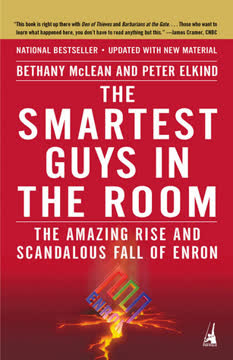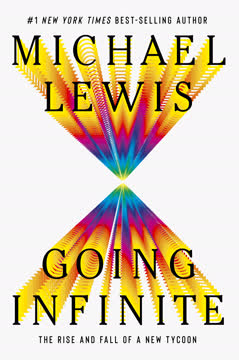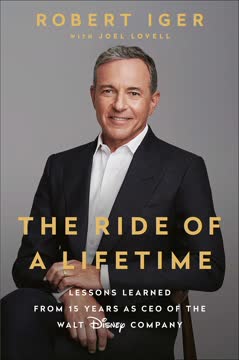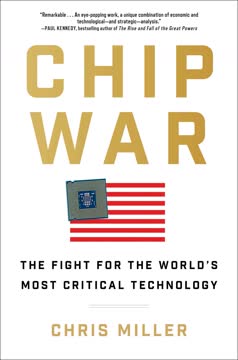Plot Summary
Ambitious Vision, Questionable Execution
Elizabeth Holmes, a Stanford dropout, envisions a groundbreaking shift in healthcare through her company, Theranos. Her goal is to develop a device capable of conducting comprehensive blood tests from a single drop of blood, promising faster, cheaper, and more accessible diagnostics. Despite the technology being far from ready, Elizabeth's charisma and determination attract significant attention and investment. She surrounds herself with influential figures, including former Secretary of State George Shultz, who becomes a staunch supporter. However, behind the scenes, the technology struggles to deliver on its promises, leading to mounting pressure and ethical concerns.
The Rise of Theranos
Theranos secures high-profile partnerships with Walgreens and Safeway, promising to revolutionize blood testing in retail settings. Elizabeth's vision captivates investors and partners, eager to be part of a groundbreaking innovation. The company raises substantial funds, and Elizabeth becomes a celebrated figure in Silicon Valley. However, the technology's limitations are becoming increasingly apparent to insiders. The company's culture, driven by Elizabeth and her partner Sunny Balwani, is secretive and intense, with a focus on loyalty and long hours. Despite internal challenges, Theranos pushes forward with its ambitious plans.
Secrets and Deceptions Unveiled
As Theranos prepares to launch its services, internal dissent grows. Key employees express concerns about the technology's reliability and the ethical implications of launching unproven tests. Elizabeth and Sunny dismiss these concerns, prioritizing the company's public image and partnerships. The pressure to deliver leads to questionable practices, including manipulating test results and misleading partners. Regulatory challenges arise, and the company's secrecy and lack of transparency become liabilities. Despite these issues, Elizabeth's persuasive skills keep investors and partners at bay, but the cracks in Theranos's facade are widening.
The Power of Persuasion
Elizabeth's ability to persuade and inspire remains her greatest asset. She continues to attract influential supporters and deflect criticism with her vision of transforming healthcare. Her relationship with powerful figures like George Shultz provides a shield against scrutiny. However, the internal turmoil and ethical breaches are becoming harder to contain. Employees who question the company's practices face retaliation, and the culture of fear and secrecy intensifies. Elizabeth's unwavering belief in her mission blinds her to the growing risks, as she remains determined to prove her doubters wrong.
Whistleblowers and Internal Strife
As internal pressures mount, employees like Tyler Shultz and Erika Cheung become increasingly concerned about the ethical implications of Theranos's practices. Whistleblowers risk their careers to expose the truth, facing intimidation and legal threats from the company. The culture of fear and secrecy stifles dissent, but the courage of a few individuals begins to crack the facade. Their revelations highlight the discrepancies between Theranos's public claims and the reality of its technology, setting the stage for regulatory intervention.
Regulatory Scrutiny Intensifies
The FDA and CMS begin to scrutinize Theranos's operations, uncovering significant deficiencies in its laboratory practices. The company's attempts to navigate regulatory requirements are met with skepticism, as inspectors find evidence of unreliable test results and improper procedures. The regulatory spotlight exposes the risks posed to patient safety, challenging Theranos's claims of innovation. As the pressure mounts, the company's ability to maintain its facade is increasingly strained, leading to a series of damaging revelations.
The Unraveling of Theranos
The combined weight of regulatory findings, whistleblower accounts, and media scrutiny leads to the rapid unraveling of Theranos. Investors and partners begin to distance themselves, and the company's valuation plummets. Holmes's attempts to salvage Theranos's reputation through public appearances and strategic shifts fail to convince stakeholders. The once-celebrated startup faces legal battles and financial ruin, as the truth about its technology and practices becomes undeniable. The dream of revolutionizing healthcare collapses under the weight of deception.
Public Deception and Legal Battles
As the truth about Theranos's operations comes to light, the company faces a barrage of legal challenges from investors, partners, and regulators. Holmes and her team attempt to deflect blame and maintain their innocence, but the evidence against them is overwhelming. The public's perception shifts from admiration to skepticism, as the narrative of innovation is replaced by one of fraud and betrayal. The legal battles highlight the consequences of Theranos's deception, serving as a cautionary tale for the tech industry.
Characters
Elizabeth Holmes
Elizabeth Holmes is the charismatic founder of Theranos, driven by a vision to revolutionize healthcare. Her ambition and determination are matched by her ability to inspire and persuade influential figures. However, her relentless pursuit of success blinds her to the ethical and practical challenges facing her company. Elizabeth's leadership style fosters a culture of secrecy and loyalty, but her inability to acknowledge the technology's limitations ultimately threatens her vision.
Sunny Balwani
Ramesh "Sunny" Balwani, Elizabeth's partner and executive at Theranos, is known for his aggressive management style. He plays a significant role in the company's operations, often clashing with employees and fostering a culture of fear. Sunny's influence over Elizabeth and the company is substantial, but his lack of expertise in medical technology contributes to the challenges Theranos faces.
George Shultz
Former Secretary of State George Shultz is a key supporter of Elizabeth and Theranos. His endorsement lends credibility to the company and helps shield it from scrutiny. Shultz's belief in Elizabeth's vision is unwavering, but his support is based on her persuasive narrative rather than the company's actual capabilities.
Ian Gibbons
Ian Gibbons is a respected biochemist at Theranos, instrumental in developing the company's technology. Despite his dedication, he becomes increasingly disillusioned with the company's direction and Elizabeth's leadership. Ian's concerns about the technology's reliability and ethical implications are dismissed, leading to personal and professional turmoil.
David Boies
David Boies, a renowned attorney, represents Theranos in legal matters. His aggressive tactics and reputation for winning high-profile cases make him a formidable ally for Elizabeth. Boies's involvement underscores the company's willingness to use legal means to protect its interests, even as internal and external pressures mount.
Tyler Shultz
Tyler Shultz, a former Theranos employee and the grandson of board member George Shultz, becomes a key whistleblower. His ethical concerns about the company's practices lead him to risk his career to expose the truth. Tyler's actions highlight the internal dissent within Theranos and the personal sacrifices made by those who choose to stand against deception.
Erika Cheung
Erika Cheung, a young scientist at Theranos, joins Tyler Shultz in raising concerns about the company's practices. Her commitment to scientific integrity and patient safety drives her to speak out, despite the risks. Erika's role underscores the importance of ethical responsibility in the face of corporate pressure and the power of individual courage to effect change.
Plot Devices
Secrecy and Control
Theranos operates under a veil of secrecy, with Elizabeth and Sunny controlling information flow and demanding loyalty from employees. This culture stifles dissent and fosters fear, allowing questionable practices to persist. The company's emphasis on secrecy becomes a double-edged sword, protecting it from scrutiny but also concealing critical issues.
Persuasion and Influence
Elizabeth's ability to persuade and inspire is a central plot device, enabling her to attract influential supporters and deflect criticism. Her charisma masks the company's underlying issues, allowing Theranos to maintain its facade despite mounting challenges. This influence is both a strength and a vulnerability, as it delays necessary scrutiny and accountability.
Regulatory Challenges
The regulatory challenges faced by Theranos highlight the tension between innovation and compliance. The company's unconventional approach to blood testing raises questions about its adherence to regulations, leading to scrutiny from regulatory bodies. These challenges underscore the risks of prioritizing rapid growth over regulatory compliance and patient safety.
Analysis
"Bad Blood" serves as a stark warning about the perils of unchecked ambition and the seductive power of charisma in the tech industry. John Carreyrou's investigation into Theranos reveals how a compelling vision can blind investors, partners, and even the visionary herself to the ethical and practical realities of innovation. The book underscores the importance of transparency, accountability, and ethical responsibility in business, particularly in industries that directly impact public health. It highlights the dangers of a culture that prioritizes loyalty and secrecy over truth and integrity, ultimately leading to the downfall of a once-promising startup. The story of Theranos is a reminder of the critical need for rigorous scrutiny and ethical standards in the pursuit of technological advancement.
Last updated:
FAQ
Synopsis & Basic Details
What is Bad Blood: Secrets and Lies in a Silicon Valley Startup about?
- Ambitious Startup's Downfall: The book chronicles the rise and fall of Theranos, a blood-testing startup founded by Elizabeth Holmes, detailing its innovative vision, flawed technology, and the web of deception that led to its collapse.
- Deception and Mismanagement: It exposes how Holmes and her partner, Sunny Balwani, misled investors, partners, and the public about the capabilities of their blood-testing devices, prioritizing secrecy and control over scientific rigor and patient safety.
- Ethical and Legal Implications: The narrative explores the ethical and legal ramifications of Theranos's actions, highlighting the consequences of unchecked ambition and the importance of transparency and accountability in the tech industry.
Why should I read Bad Blood: Secrets and Lies in a Silicon Valley Startup?
- Compelling Real-Life Drama: The book reads like a thriller, offering a gripping narrative of a high-stakes Silicon Valley startup, complete with charismatic leaders, internal conflicts, and a dramatic downfall.
- Insight into Corporate Deception: It provides a detailed look into the inner workings of a company built on deception, revealing the methods used to mislead investors, partners, and the public, and the consequences of such actions.
- Ethical and Moral Lessons: It raises important questions about ethics, ambition, and the responsibility of leaders, offering valuable lessons about the importance of transparency, accountability, and integrity in business and technology.
What is the background of Bad Blood: Secrets and Lies in a Silicon Valley Startup?
- Silicon Valley Culture: The story is set against the backdrop of Silicon Valley's culture of innovation, ambition, and the pursuit of rapid growth, highlighting the pressures and temptations that can lead to ethical lapses.
- Technological Innovation: The book explores the complexities of medical technology development, revealing the challenges of bringing a groundbreaking idea to market and the potential for deception when scientific rigor is compromised.
- Regulatory Landscape: It delves into the regulatory challenges of the healthcare industry, exposing the loopholes and challenges of oversight that allowed Theranos to operate with minimal scrutiny for an extended period.
What are the most memorable quotes in Bad Blood: Secrets and Lies in a Silicon Valley Startup?
- "The company is all that matters.": This quote, attributed to Elizabeth Holmes, reveals her ruthless dedication to Theranos's success, even at the expense of her employees' well-being, highlighting her single-minded ambition.
- "We've been fooling investors. We can't keep doing that.": This quote from Henry Mosley, Theranos's former CFO, underscores the ethical breach at the heart of the company, revealing the deliberate deception used to attract funding.
- "You start to realize you are looking in the eyes of another Bill Gates, or Steve Jobs.": This quote from Channing Robertson, a Theranos board member, illustrates the high expectations and comparisons that fueled Holmes's ambition and the company's hype, despite the lack of evidence.
What writing style, narrative choices, and literary techniques does John Carreyrou use?
- Investigative Journalism Style: Carreyrou employs a meticulous, fact-based approach, drawing on extensive interviews, documents, and legal records to construct a detailed and compelling narrative, characteristic of investigative journalism.
- Character-Driven Narrative: The story is told through the perspectives of various characters, including employees, investors, and regulators, providing a multi-faceted view of Theranos and its downfall, and highlighting the human impact of the company's actions.
- Foreshadowing and Dramatic Irony: Carreyrou uses subtle foreshadowing and dramatic irony to build suspense and tension, revealing the cracks in Theranos's facade and hinting at the impending collapse, enhancing the reader's engagement with the narrative.
Hidden Details & Subtle Connections
What are some minor details that add significant meaning?
- The Black Turtleneck: Elizabeth Holmes's adoption of the black turtleneck, a signature look of Steve Jobs, symbolizes her attempt to emulate his success and project an image of visionary leadership, despite lacking his technical expertise.
- The "Extra-Ordinary" Emails: Holmes's use of the term "extra-ordinary" in emails to staff, with "extra" in italics and a hyphen, reveals her over-the-top, almost cult-like approach to the Theranos mission, highlighting her self-belief and the company's inflated sense of importance.
- The Paperweight: The paperweight on Holmes's desk with the phrase, "What would you attempt to do if you knew you could not fail?" reveals her idealistic and ambitious nature, but also her detachment from the practical realities of her company's technology.
What are some subtle foreshadowing and callbacks?
- Mosley's Firing: The abrupt firing of CFO Henry Mosley after he questions the technology's reliability foreshadows the company's pattern of silencing dissent and prioritizing secrecy over transparency, hinting at the deeper problems within Theranos.
- The Fake Novartis Demo: The fake demonstration of Theranos's technology to Novartis executives, where a result was beamed from California to Switzerland, foreshadows the company's willingness to deceive and manipulate data to maintain its image.
- The "Gluebot": The initial derisive nickname for the machine that became the Edison, the "gluebot," serves as a callback to the company's initial lofty vision of microfluidics, highlighting the gap between its aspirations and its actual capabilities.
What are some unexpected character connections?
- Holmes and Fuisz Families: The long-standing friendship between the Holmes and Fuisz families, which later turns into a bitter legal battle, reveals the personal nature of the conflict and the extent to which Holmes was willing to go to protect her company.
- Tevanian and Jobs: The connection between Avie Tevanian and Steve Jobs, and Tevanian's subsequent disillusionment with Theranos, highlights the contrast between genuine innovation and the imitation of success, and the dangers of hero worship.
- Shultz and Holmes: The close relationship between George Shultz and Elizabeth Holmes, which is based on a shared vision of innovation, reveals the power of persuasion and the extent to which even experienced figures can be misled by a charismatic leader.
Who are the most significant supporting characters?
- Sunny Balwani: As Elizabeth Holmes's partner and COO, Balwani's aggressive management style and lack of technical expertise significantly contribute to the company's downfall, highlighting the dangers of unchecked power and influence.
- Tyler Shultz: As a whistleblower and grandson of George Shultz, Tyler's ethical concerns and courageous actions expose the company's fraudulent practices, underscoring the importance of individual integrity in the face of corporate pressure.
- Alan Beam: As the lab director, Beam's growing disillusionment and eventual resignation reveal the internal conflicts and ethical breaches within Theranos, highlighting the importance of scientific rigor and patient safety.
Psychological, Emotional, & Relational Analysis
What are some unspoken motivations of the characters?
- Elizabeth Holmes's Need for Validation: Beyond financial success, Holmes's actions suggest a deep-seated need for validation and recognition, driving her to seek comparisons with iconic figures like Steve Jobs and to prioritize her public image over the company's actual progress.
- Sunny Balwani's Desire for Power: Balwani's aggressive management style and control over information suggest a desire for power and influence, using Theranos as a means to assert his authority and validate his own self-worth.
- George Shultz's Desire for Legacy: Shultz's unwavering support for Holmes, despite mounting evidence of wrongdoing, suggests a desire to be associated with a groundbreaking innovation, potentially clouding his judgment and leading him to overlook ethical concerns.
What psychological complexities do the characters exhibit?
- Elizabeth Holmes's Narcissism: Holmes exhibits traits of narcissism, including a grandiose sense of self-importance, a lack of empathy, and a need for admiration, which contribute to her inability to acknowledge the company's flaws and her willingness to deceive others.
- Sunny Balwani's Insecurity: Balwani's aggressive behavior and need for control suggest underlying insecurities, which he attempts to mask through intimidation and the assertion of his authority, revealing a fragile ego beneath his tough exterior.
- Tyler Shultz's Moral Conflict: Shultz's internal struggle between his loyalty to his family and his ethical responsibility to expose the truth highlights the psychological toll of whistleblowing and the challenges of standing up against powerful forces.
What are the major emotional turning points?
- Mosley's Firing: The moment when Elizabeth Holmes fires Henry Mosley for questioning the company's practices marks a major emotional turning point, revealing her willingness to prioritize control over ethical considerations and foreshadowing the company's downfall.
- Gibbons's Death: The suicide of Ian Gibbons, a key scientist at Theranos, underscores the emotional toll of the company's toxic culture and the devastating consequences of prioritizing secrecy and control over the well-being of employees.
- Shultz's Resignation: Tyler Shultz's decision to resign from Theranos, despite his grandfather's influence, marks a major emotional turning point, highlighting the power of individual conscience and the courage to stand up against injustice.
How do relationship dynamics evolve?
- Holmes and Balwani's Relationship: The romantic and professional relationship between Holmes and Balwani evolves from a seemingly supportive partnership to a toxic dynamic characterized by control, manipulation, and ultimately, betrayal, revealing the destructive nature of their shared ambition.
- Holmes and Shultz's Relationship: The relationship between Holmes and George Shultz, initially based on mutual admiration and respect, deteriorates as the truth about Theranos emerges, highlighting the limits of personal loyalty in the face of ethical breaches.
- Employee Relationships: The relationships among Theranos employees evolve from initial camaraderie and shared enthusiasm to a culture of fear, distrust, and betrayal, revealing the corrosive effects of a toxic work environment and the importance of ethical leadership.
Interpretation & Debate
Which parts of the story remain ambiguous or open-ended?
- Holmes's True Intentions: The extent to which Holmes was aware of the limitations of her technology and the degree to which she deliberately misled others remains ambiguous, leaving room for debate about her culpability and motivations.
- Balwani's Role: The precise nature of Balwani's influence over Holmes and the extent to which he was aware of the company's fraudulent practices remains open to interpretation, raising questions about his level of responsibility for Theranos's downfall.
- The Future of Theranos: The long-term consequences of Theranos's collapse and the potential for future innovation in blood testing remain open-ended, leaving readers to ponder the lessons learned and the path forward for the industry.
What are some debatable, controversial scenes or moments in Bad Blood: Secrets and Lies in a Silicon Valley Startup?
- The Faked Novartis Demo: The decision to fake the results of a Theranos demonstration for Novartis executives raises questions about the ethical boundaries of business and the extent to which deception is acceptable in the pursuit of success.
- The Treatment of Whistleblowers: The company's aggressive response to whistleblowers, including legal threats and intimidation tactics, sparks debate about the importance of protecting those who speak out against wrongdoing and the responsibility of companies to foster a culture of transparency.
- The Role of the Board: The failure of Theranos's board of directors to provide adequate oversight and hold Holmes accountable raises questions about the effectiveness of corporate governance and the responsibility of board members to protect investors and the public.
Bad Blood: Secrets and Lies in a Silicon Valley Startup Ending Explained: How It Ends & What It Means
- Theranos's Collapse: The book concludes with the unraveling of Theranos, as regulatory scrutiny, legal battles, and media exposure reveal the company's fraudulent practices, leading to its downfall and the loss of billions of dollars in investment.
- Holmes's Downfall: Elizabeth Holmes, once a celebrated figure in Silicon Valley, faces legal charges and a tarnished reputation, highlighting the consequences of unchecked ambition and the importance of ethical leadership.
- A Cautionary Tale: The ending serves as a cautionary tale about the dangers of deception, the importance of transparency and accountability, and the need for ethical standards in the pursuit of technological innovation, leaving readers to reflect on the lessons learned from Theranos's collapse.
Review Summary
Bad Blood is a gripping account of the Theranos scandal, exposing Elizabeth Holmes' fraudulent blood-testing startup. Readers praise Carreyrou's meticulous investigative journalism and compelling storytelling. The book reveals how Holmes deceived investors, employees, and the public with her unfulfilled promises of revolutionary technology. Many found the story shocking and unbelievable, likening it to a thriller. While some felt the technical details were overwhelming, most agreed it was a fascinating exposé of corporate fraud and the dangers of unchecked ambition in Silicon Valley.
Similar Books










Download PDF
Download EPUB
.epub digital book format is ideal for reading ebooks on phones, tablets, and e-readers.




